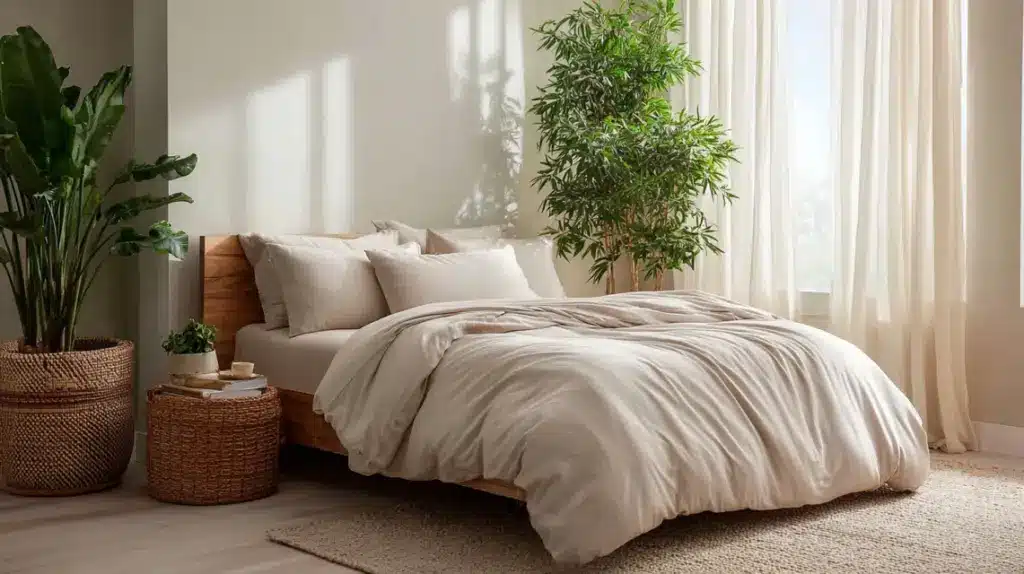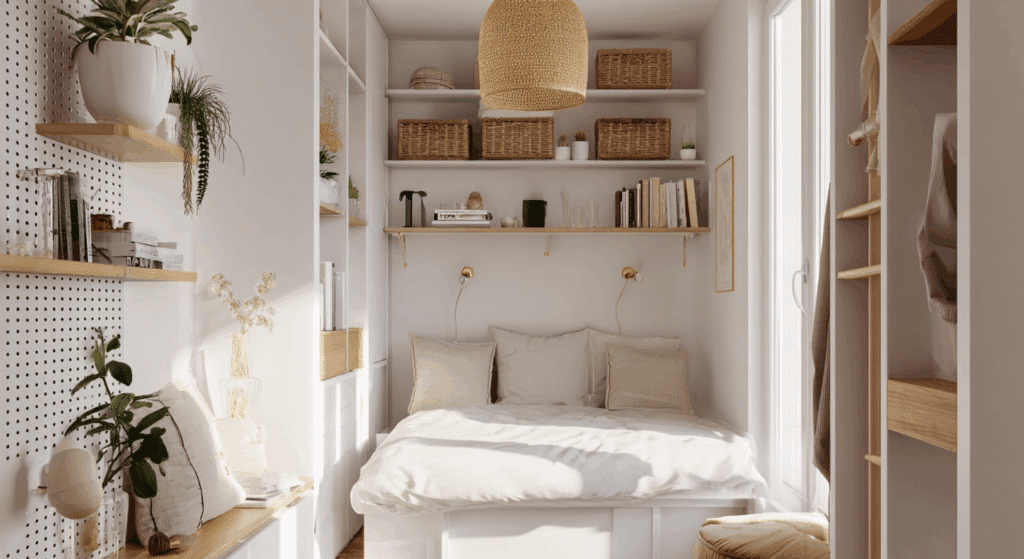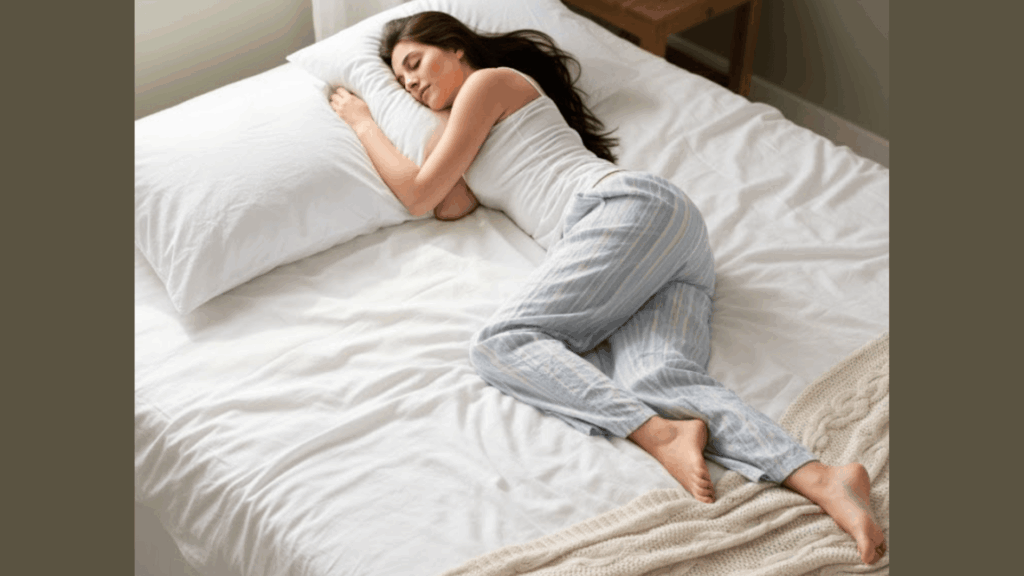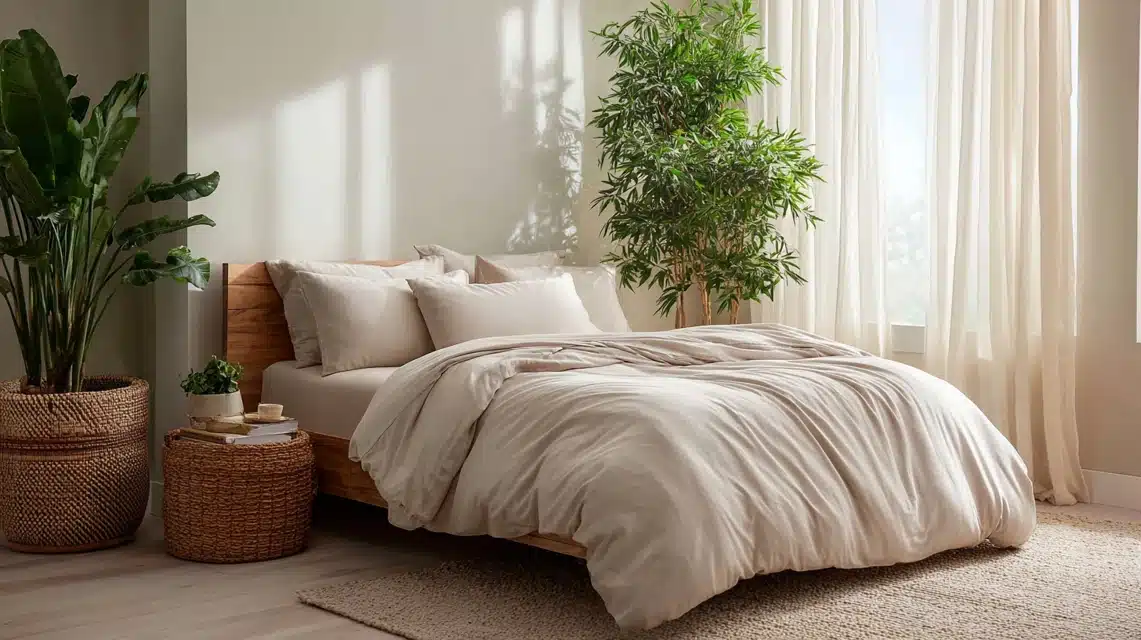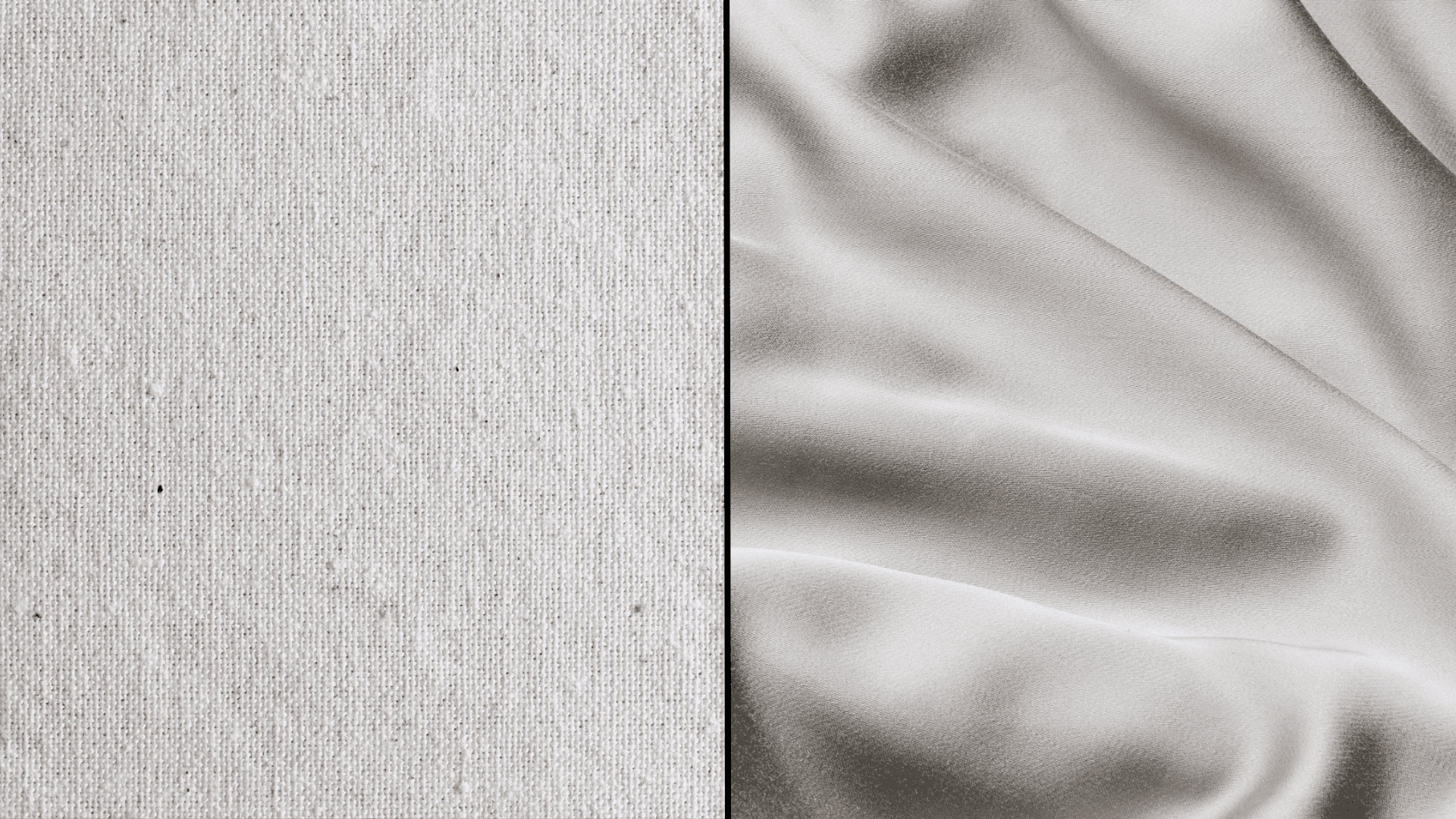I never paid much attention to what my sheets were made of until I started waking up hot and restless. That’s when I stumbled across bamboo bedding, and honestly, it changed how I sleep.
If you’ve been searching for something softer, cooler, or just a bit more breathable, you’ve probably seen the buzz around bamboo sheets, too. But with so many claims out there, it’s hard to know what’s real.
Are they actually worth the cost, or just another trend? Here, I’ll walk you through the real benefits of bamboo sheets, the comfort, care, and cost factors that truly matter, so you can decide if they’re the right fit for your bed and your sleep.
Are Bamboo Sheets Really Worth It?
Yes, bamboo sheets can be an excellent choice, but they’re not ideal for everyone. Their biggest advantage is comfort: the fibers feel naturally smooth, soft, and cool, helping reduce overheating during sleep.
They’re also moisture-wicking and hypoallergenic, making them suitable for people with allergies or sensitive skin. On the sustainability side, bamboo grows quickly without pesticides, which gives it an eco-friendly edge over conventional cotton.
However, quality can vary depending on how the fabric is made, and some types require careful washing to prevent wear or wrinkling. They also tend to cost more upfront.
Overall, they’re best for hot sleepers and eco-conscious buyers, but less practical for cold sleepers or anyone seeking low-maintenance bedding.
Overview of Bamboo Sheets
Bamboo sheets are made from fibers extracted from the bamboo plant. The process starts with bamboo stalks being crushed into pulp, then converted into fibers, spun into yarn, and finally woven into soft, breathable fabric.
Depending on the production method, the fabric can vary in feel and sustainability. Here’s a quick breakdown of the main types of bamboo fabric you’ll come across:
| Type | Process | Feel | Eco Rating | Durability |
|---|---|---|---|---|
| Viscose | Chemical | Silky and lightweight | Medium | Moderate |
| Lyocell | Closed-loop system | Smooth and breathable | High | High |
| Modal | Chemical with added stretching | Soft and flexible | Medium | High |
The final texture also depends on the weave. Percale feels crisp and cool, perfect for warm climates. Sateen has a smooth, silk-like finish with a gentle sheen. Twill is thicker and more durable, ideal for cooler seasons or frequent use.
Key Benefits of Bamboo Sheets
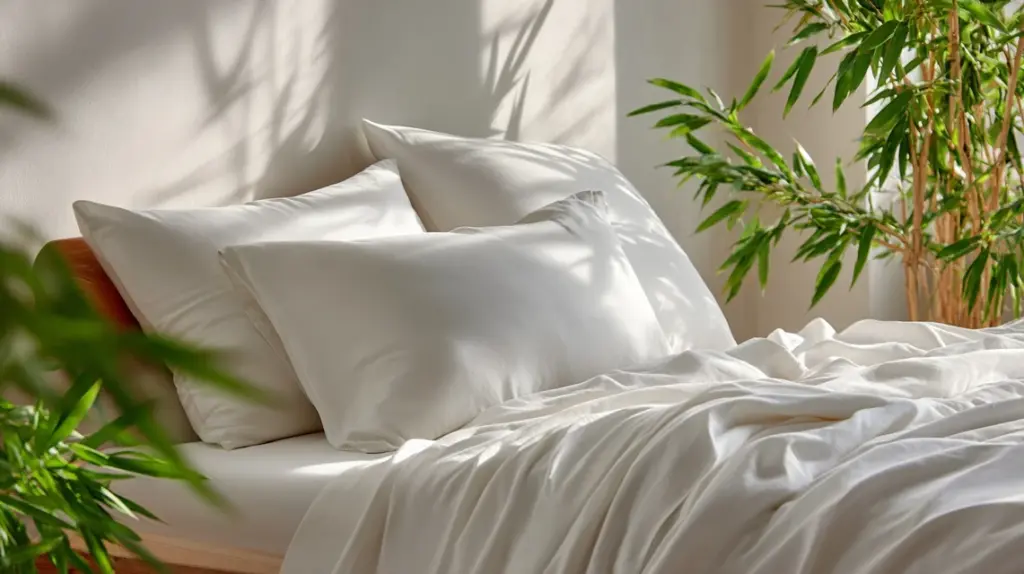
Bamboo sheets stand out for comfort, cooling ability, skin-friendliness, sustainability, and long-term value. These are the benefits of bamboo sheets that most people notice after switching from cotton or polyester.
1. Soft and Silky Comfort
Bamboo sheets feel incredibly smooth because the fibers are naturally fine and long, leaving fewer rough ends against your skin. This results in a softness similar to silk or premium cotton but without the heavy finish.
Studies on fabric friction, such as those by Li and Wong (2018) in the Textile Research Journal, show that bamboo viscose can be up to 30% smoother than cotton. This reduced surface friction explains its noticeably softer, silk-like texture.
If you prefer that cool, sleek feel when you slide into bed, bamboo fabric rivals even high-end materials in comfort
2. Temperature Regulation for Hot Sleepers
Bamboo fibers contain tiny micro-gaps that let air circulate freely, helping prevent heat buildup during the night. This natural airflow keeps your body temperature steady and helps reduce sweating.
In tests comparing fabrics, bamboo consistently allowed faster moisture evaporation than cotton, keeping the fabric surface cooler.
Imagine it like this:
Bamboo = breathable and moisture-wicking | Cotton = holds more heat
That’s why bamboo bedding is often preferred by hot sleepers or those living in warmer climates.
3. Hypoallergenic and Gentle on Skin
The smooth structure of bamboo fabric minimizes skin irritation, making it suitable for people with eczema, acne, or allergies.
Bamboo naturally contains a compound called bamboo kun, which resists bacterial growth, keeping the fabric fresher between washes.
This property is strongest in bamboo lyocell fabrics, which maintain more of the plant’s original antimicrobial quality.
The soft surface also reduces friction, so your skin feels less irritated, even if you toss and turn during sleep.
4. Moisture-Wicking for a Drier Sleep
Bamboo fabric excels at wicking moisture through capillary action.
It quickly draws sweat from your body and spreads it across the fabric so it can evaporate faster. This keeps you dry and prevents that sticky feeling caused by heat and humidity.
People living in tropical regions or who experience night sweats notice a significant improvement in comfort after switching to bamboo sheets, as the fabric stays cool and fresh throughout the night.
5. Eco-Friendly Material (When Made Right)
Bamboo grows quickly without fertilizers or pesticides and uses far less water than cotton. It’s a renewable plant that helps absorb carbon dioxide and release oxygen.
However, its eco benefits depend on the manufacturing method; some chemical processes can offset those gains. Look for certifications such as OEKO-TEX or FSC to ensure safe, sustainable production.
| Material | Water Use | Pesticides | Biodegradable | Carbon Footprint |
|---|---|---|---|---|
| Bamboo | Low | None | Yes | Low |
| Cotton | High | High | Yes | Moderate |
| Polyester | Very Low | None | No | High |
6. Long-Lasting and Less Pilling
High-quality bamboo sheets are known for their durability. The long, flexible fibers hold their shape well and resist pilling better than short-staple cotton.
With proper care, gentle washing, mild detergent, and air drying, they can last around four to five years while maintaining their smooth texture.
In contrast, many cotton sheets show wear within two to three years. Rotating sets and following washing instructions help bamboo bedding stay soft, breathable, and looking new for longer.
The Drawbacks to Know Before Buying Bamboo Sheets
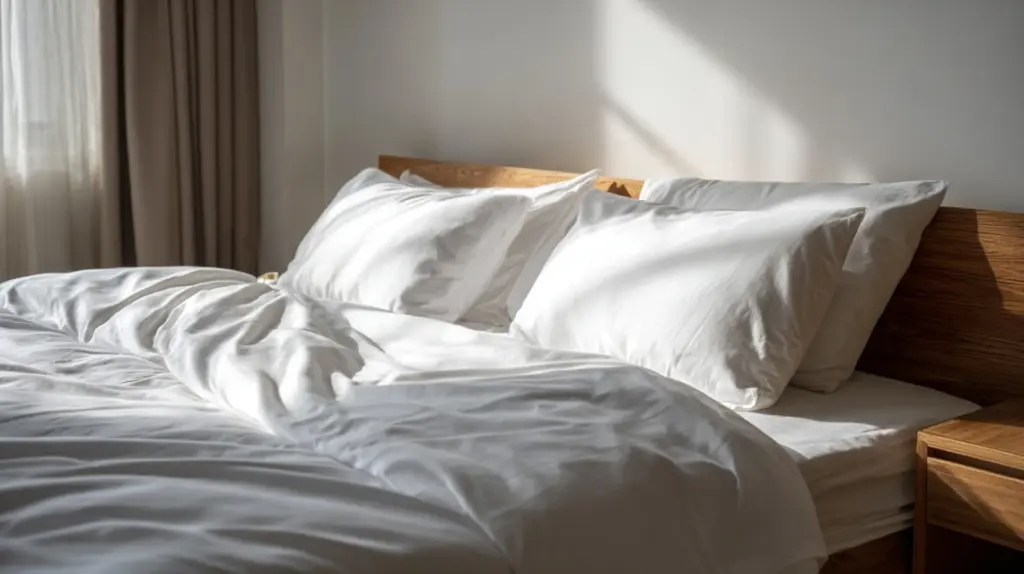
While bamboo sheets have many strong points, there are also a few downsides worth considering before you invest in them. Understanding these drawbacks helps you choose wisely and set realistic expectations.
1. Higher Price Tag
Bamboo sheets usually cost more than standard cotton sets, with prices averaging $100–$180 for quality options compared to $40–$100 for cotton.
The higher price comes from the processing required to turn bamboo pulp into soft fibers and from the eco-friendly certifications many brands maintain.
However, if you consider lifespan, bamboo sheets often last longer and resist wear better. When spread over several years of use, the cost per year can actually be lower than frequently replacing cheaper cotton sheets.
2. Quality Varies Widely
Not all bamboo sheets are created equal. Many lower-priced options are made from bamboo viscose blends, which undergo heavy chemical treatment or include synthetic fibers that reduce breathability.
To ensure you’re buying genuine bamboo fabric, look for bamboo lyocell or 100% bamboo viscose clearly stated on the label.
3. Care Sensitivity
Bamboo sheets are soft and durable, but they need gentle handling to stay that way. Machine-wash them in cold or lukewarm water using mild detergent, and tumble-dry on a low setting.
High heat can weaken the fibers, and over-drying may cause wrinkles that are difficult to remove.
These sheets aren’t ideal if you prefer low-maintenance bedding, as they benefit from prompt drying and occasional light ironing to keep them smooth and fresh.
4. Greenwashing and Misleading Labels
Some brands market their bamboo bedding as completely natural or organic when it’s not.
The label “Rayon from bamboo” simply means the fabric started as bamboo pulp but was heavily processed using chemical solvents. This version isn’t necessarily eco-friendly.
Truly sustainable bamboo fabrics, such as bamboo lyocell, use closed-loop systems that recycle water and solvents.
When shopping, look for transparency in production methods, certification numbers, and details about chemical recovery rather than relying on broad “green” claims.
5. Not Ideal for Cold Sleepers
Because bamboo sheets are lightweight and breathable, they don’t retain warmth as effectively as heavier fabrics like flannel or brushed cotton. Cold sleepers may find them too cool during winter or in colder regions.
To balance comfort, pair your bamboo sheets with a bamboo or down comforter, or layer them with a heavier blanket for added warmth. This way, you can still enjoy their softness and breathability without feeling chilled.
Bamboo vs. Other Popular Fabrics
Before choosing, it helps to compare bamboo with other common materials on softness, breathability, cost, and sustainability.
| Fabric Type | Softness | Breathability | Sustainability | Durability | Care Needs | Ideal For | Average Price (Queen Set) |
|---|---|---|---|---|---|---|---|
| Bamboo | Very soft, silky feel | Excellent airflow | High (fast-growing, low water use) | Strong when cared for properly | Gentle wash, low heat | Hot sleepers, allergy-prone users | $100–$180 |
| Cotton | Soft, improves with washing | Good breathability | Moderate (high water and pesticide use) | Durable | Easy to wash, tolerates heat | Every day use, budget shoppers | $40–$100 |
| Linen | Textured, softens over time | Highly breathable | High (natural and biodegradable) | Very durable | Needs ironing, wrinkles easily | Warm climates, rustic look | $120–$200 |
| Silk | Smooth, luxurious texture | Moderate airflow | Low (requires intensive farming) | Delicate | Hand-wash only | Cold sleepers, luxury buyers | $150–$300 |
| Polyester/Microfiber | Smooth but synthetic feel | Low breathability | Low (petroleum-based) | Durable but non-biodegradable | Easy care | Budget use, dorms | $25–$60 |
This table shows bamboo strikes a balance between comfort, breathability, and sustainability, making it a practical upgrade over most alternatives.
How to Choose the Best Bamboo Sheets
Not all bamboo sheets offer the same comfort or quality, so checking a few details before buying can save you disappointment later. Use this quick checklist to find sheets that truly match your needs and expectations.
Buying Checklist
| Category | What to Look For | Details / Tips |
|---|---|---|
| Fiber Type | Bamboo Lyocell | Most eco-friendly and durable; avoid blends or unclear materials. |
| Certifications | OEKO-TEX, FSC, GOTS | Confirms safe and responsible production; GOTS applies when mixed with organic cotton. |
| Weave | Percale or Sateen | Percale = crisp and cool (best for hot weather); Sateen = silky and heavier. |
| GSM / Fabric Weight | 120–150 GSM | Light enough for breathability but dense enough for durability. |
| Fit | Deep Pocket Corners | Matches the mattress height and prevents slipping. |
| Brand Transparency | Clear Product Details | Reliable brands list fiber type, origin, and certification links on packaging or on their websites. |
Red Flag Box: What to Avoid
- Vague material claims: Phrases like “eco bamboo” or “bamboo-derived” often mask synthetic blends.
- Missing certifications: Lack of OEKO-TEX or FSC labels may indicate unsafe or unsustainable processing.
- Too-high thread counts: Anything over 1000 TC is likely false marketing; bamboo fabric is measured better by GSM, not thread count.
Complete Care and Maintenance Guide for Bamboo Sheets
Caring for bamboo sheets is simple. Follow these easy steps to keep them soft, clean, and long-lasting in any climate.
Care Instructions
- Machine-wash: Use cold or lukewarm water on a gentle cycle to protect fiber strength.
- Mild detergent: Choose a pH-neutral option to maintain softness and prevent damage.
- Avoid harsh products: Skip bleach and fabric softeners, as they weaken and dull the material.
- Drying: Tumble dry on low heat or line dry to preserve the sheet’s texture and shape.
- Ironing: Use a low setting if needed to smooth wrinkles without overheating the fabric.
Climate-Specific Care Tips
- Humid climates: Dry promptly and store in a cool, dry area to prevent mildew.
- Dry climates: Add a small vinegar rinse to reduce static and keep fibers fresh.
Natural Stain Removal
- Combine baking soda and vinegar into a mild paste.
- Apply to stains, wait 10–15 minutes, then wash gently.
- Safe for delicate fibers and effective on common marks.
Is Bamboo Bedding Right for You: What Studies Suggest
Bamboo bedding can be a great choice if you struggle with overheating, allergies, or want a more eco-conscious fabric.
Studies such as those by Li and Wong (2018, Textile Research Journal) found that bamboo viscose offers a surface friction that is up to 30% smoother than cotton, improving comfort for sensitive skin.
Another study by Kozlowski et al. (2021, Journal of Cleaner Production) found that bamboo viscose fabrics inhibited bacterial growth, helping reduce allergens and odors naturally.
However, if you prefer heavy, warm fabrics or want easy-care bedding, bamboo may feel too light or require more maintenance. Overall, it suits hot sleepers and health-focused buyers best.
Conclusion
So now you know what makes bamboo bedding different: soft comfort, better airflow, and a cleaner, cooler sleep experience.
The biggest benefits of bamboo sheets come down to how they feel and how long they last when properly cared for. For most people, they’re worth it if staying cool and comfortable matters more than saving a few dollars upfront.
I’d love to know how you sleep. Do you run hot, or prefer something warmer and heavier? Share your thoughts or try a set yourself to see the difference.
And if you’re still comparing materials, check out my next post on choosing between cotton, bamboo, and linen for your best sleep.


